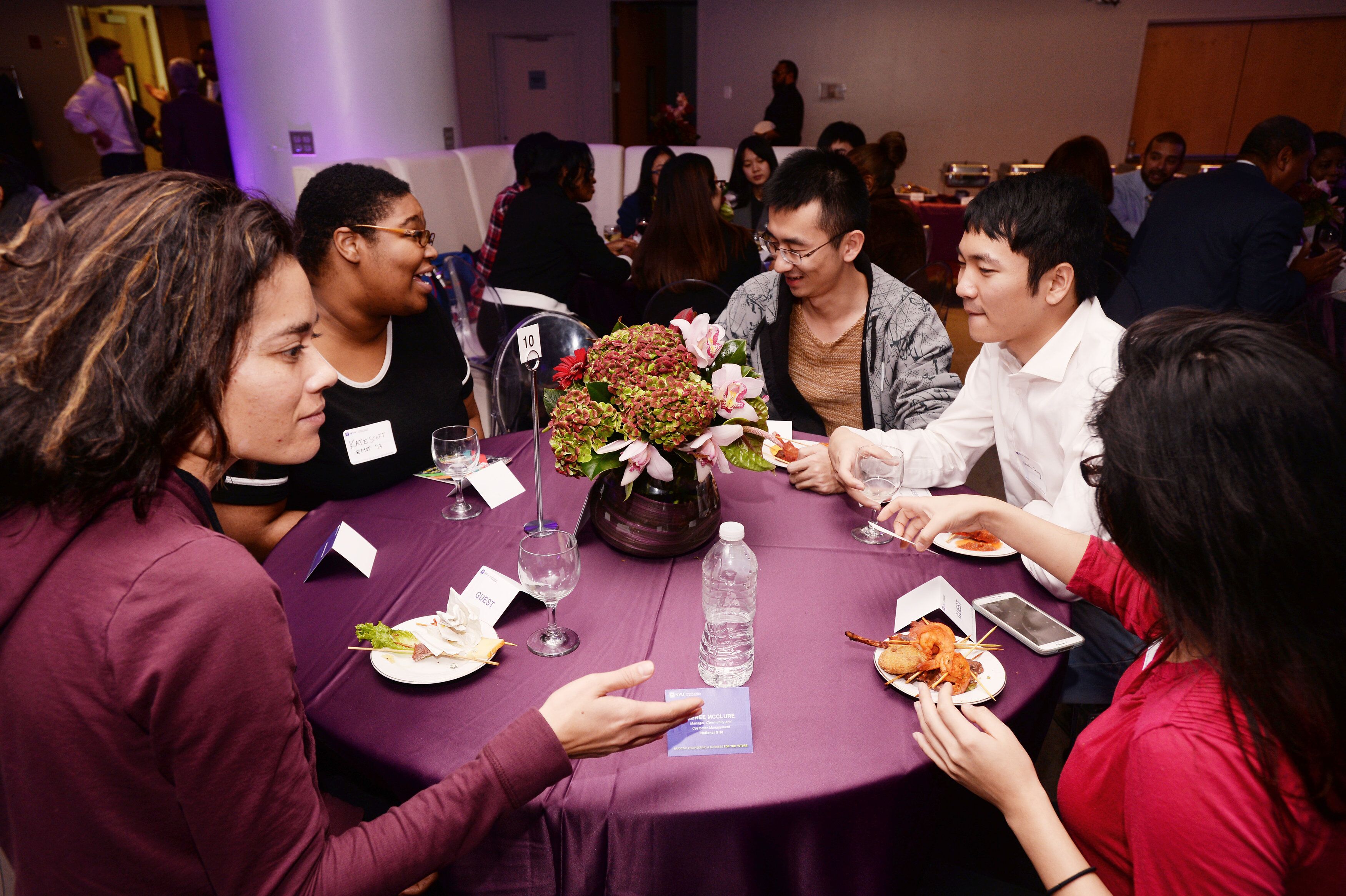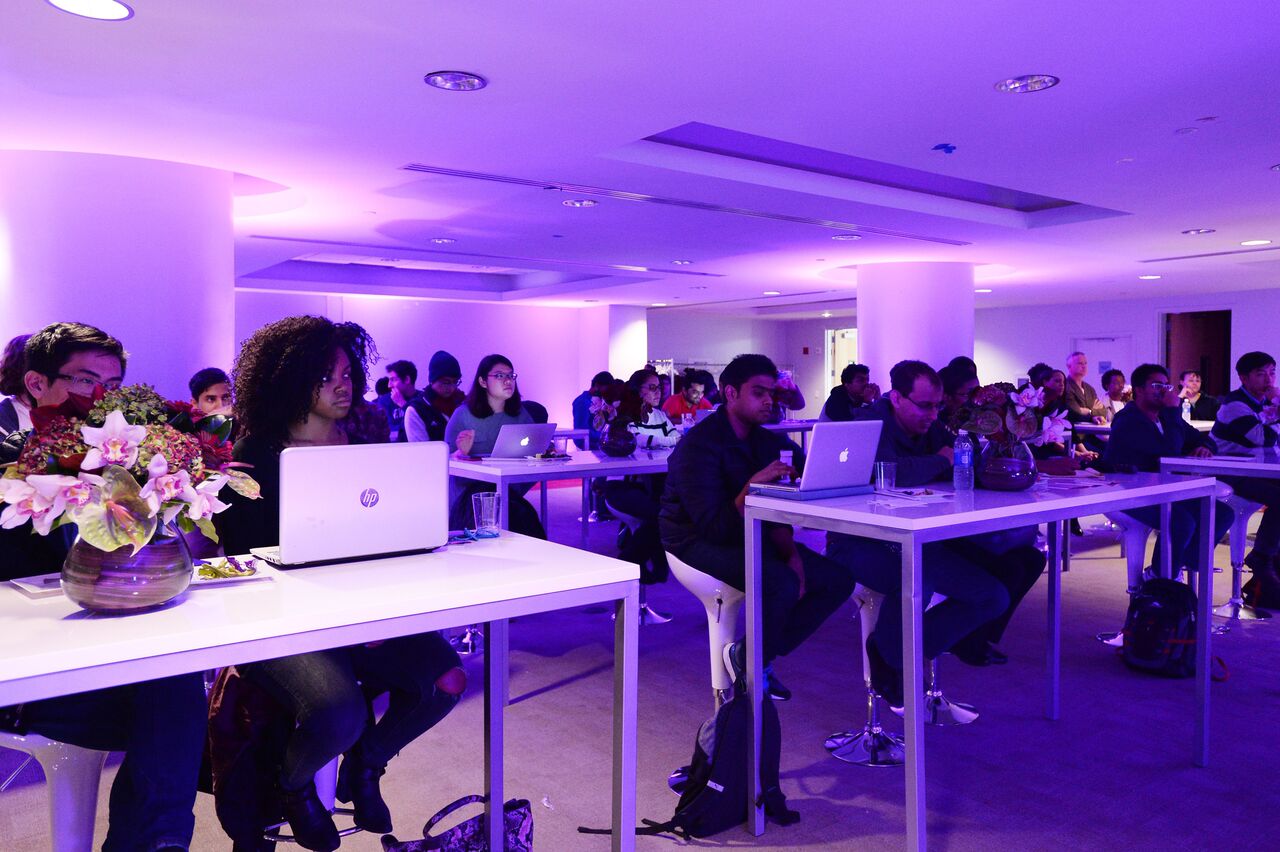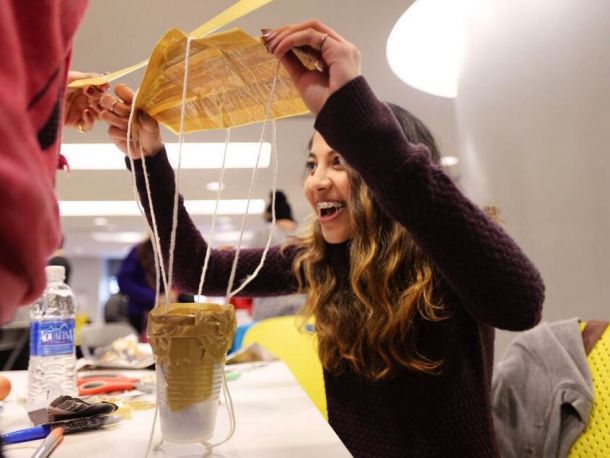Minding the Gap
NYU Tandon School of Engineering Is Deeply Committed to Diversity in STEM, from the Classroom to the Workplace

The statistics can feel disheartening: the National Action Council for Minorities in Engineering (NACME) recently reported that while about 12 percent of the U.S. population is African American, blacks represent just 3.6 percent of the engineering workforce and earn only 4 percent of the B.S. degrees in engineering conferred annually.
A gender gap exists in addition to the racial one: According to the 2015 U.S. News-Raytheon STEM Index, a respected annual study, “with few exceptions, women lag behind men in the number of STEM degrees granted, exam scores and general interest in the STEM fields.”
Associate Dean of Student Affairs Anita Farrington does not allow herself to be disheartened, however. Like administrators and professors from across the Tandon community, she has long been committed to increasing the number of underrepresented minorities at the school, and in 2014 she was spurred to greater action. It was then she began planning a massive days-long summit focused on the importance of diversity not only in STEM education but out in the engineering workforce. Receiving commitments from a large number of high-profile speakers (including Brooklyn Borough President Eric Adams and NACME President and CEO Irving McPhail), signing up representatives from some 30 companies (including ConEd and National Grid), and arranging to accommodate hundreds of attendees was an ambitious undertaking, a year in the making. Her vision came to fruition on November 18, with the kickoff of the 2015 Diversity in STEM Summit, which she foresees becoming a regular event.
The timing seemed almost prescient; with students at colleges and universities across the country vociferously protesting racial discrimination, the 2015 fall semester, as one New York Times journalist pointed out, was turning “into a period of intense focus on racial misunderstanding.”
Dean Farrington pointed out, however, that at the NYU Tandon School of Engineering, “We had already been having these conversations and connecting the dots between genders, cultures, races, socioeconomic groups, and military veterans and non-veterans.” She continued, “As Dean Katepalli Sreenivasan explained in his welcome remarks, it’s imperative that everyone be at the table, because there is a direct connection between diversity and excellence. Diverse teams have been proven to be more innovative, and they have a positive effect on a company’s bottom line because they better reflect the realities of the marketplace.”

Diversity in STEM Gala Dinner
The summit launched with a gala dinner, where organizers had made certain to seat at least one alum and one industry insider with each group of student attendees in order to facilitate conversation and networking. (Leaving nothing to chance, they even provided a set list of conversation starters, with diners discussing, for example, the biggest challenges they had faced as engineers from underrepresented groups.) School of Engineering undergraduate Stefan Cherubin was especially excited to speak to Borough President Adams and learn more about Hour of Code, an initiative that aims to provide every public school student in Brooklyn with the chance to learn computer science and coding. “I attended Brooklyn public schools so I’m excited to volunteer and inspire other future engineers from underrepresented groups,” Cherubin said. “If I were assigned to my old school that would be especially gratifying.”
The dinner and conversation also proved to be transformative for Computer Science and Engineering major Wells Santo, who said, “To see and interact with so many successful people of color in one place was just an incredible and inspiring experience.”

A rapt audience listens at the lightning talks.
Highlights of the following days included panel discussions, "lightning" talks, and informative sessions focused on topics like start-up culture and graduate opportunities. There were even sessions for the youngest aspiring engineers, led by
Carlos Bautista and Izabela Correa from Design for America of NYU and Earl Co from Patent Pending with support from enthusiastic NYU student volunteers who gladly gave up their Saturday to participate. One day featured a K-12 workshop in which participants practiced collaboration and rapid prototyping by developing a creative solution to keep a raw egg from cracking when dropped 15 feet—and another in which they learned the basics of electronic circuits and programming using the open-source platform Arduino. “The look on their faces when their projects succeeded was priceless,” Marie Sterling of the Office of Student Affairs said. Sterling, who was instrumental in planning the K-12 activities, continued, “They loved dropping their eggs off the balcony of the Dibner Library and programming their Arduino boards to light up and play sound.”

A young aspiring engineer participates in the egg drop workshop, led by NYU student volunteers.
Daniel Lafuente, the assistant director of the W.R. Berkley Innovation Lab at NYU Stern, spoke at the summit about the concept of social entrepreneurship—building viable businesses based on solving pressing societal problems. It’s an arena that appeals naturally to a widely diverse group, Lafuente—who sits on the board of CODeLLA, a tech entrepreneurship and coding program for Latina girls—asserts. “If you are an engineer and entrepreneur who originally hailed from Africa, you might be particularly interested in solving the problems of providing clean, safe drinking water there,” he explains. “If you are a woman, you might devote yourself to issues affecting women.” Social entrepreneurship is much more than a buzzword or trend, he stressed: “In the future, the most successful enterprises are going to be those that give something back to society, and we’ll need people of all backgrounds to contribute.”
If Luis Ocampo Giraldo, a Ph.D. Candidate in Nuclear Engineering at Pennsylvania State University and GEM Fellow at the Brookhaven National Laboratory, has anything to do with it, the nation’s graduate students are going to be among those stepping up and contributing. The founder of the Multicultural Engineering Graduate Association, an organization focused on the recruitment and retention of underrepresented graduate students in STEM (and a group that he would like to see spread to campuses throughout the country), he said, “It’s easy for grad students to get so caught up in their own research, that they have little time for anything else. But we should be more engaged; we are in a unique position to help younger students of color learn what life is like at our institutions and to encourage them to pursue their goals.”
No matter what their individual academic or entrepreneurial goals, attendees at the summit were in agreement that addressing issues of diversity and parity was of utmost importance in today’s increasingly global world. Commenting on that broad consensus, speaker Ariel Lopez, the co-founder of 20/20 Shift, an enterprise aimed at educating underrepresented millennials about tech careers, said, “It’s important for us to have these conversations, but we need to do more to engage people who are not yet convinced—like the male venture capitalists who tend to fund businesses launched by others who look like them and the companies that spend money for diversity officers but neglect to take the simple, commonsense step of hiring engineers from underrepresented groups.”
Until that becomes standard, everyday practice, Dean Farrington has no intention of letting the conversation drop. “The School of Engineering will always be a place where we engage in free, open, and above all, respectful dialogue,” she says. “We are located in one of the most diverse cities in the world, and our values reflect that.




